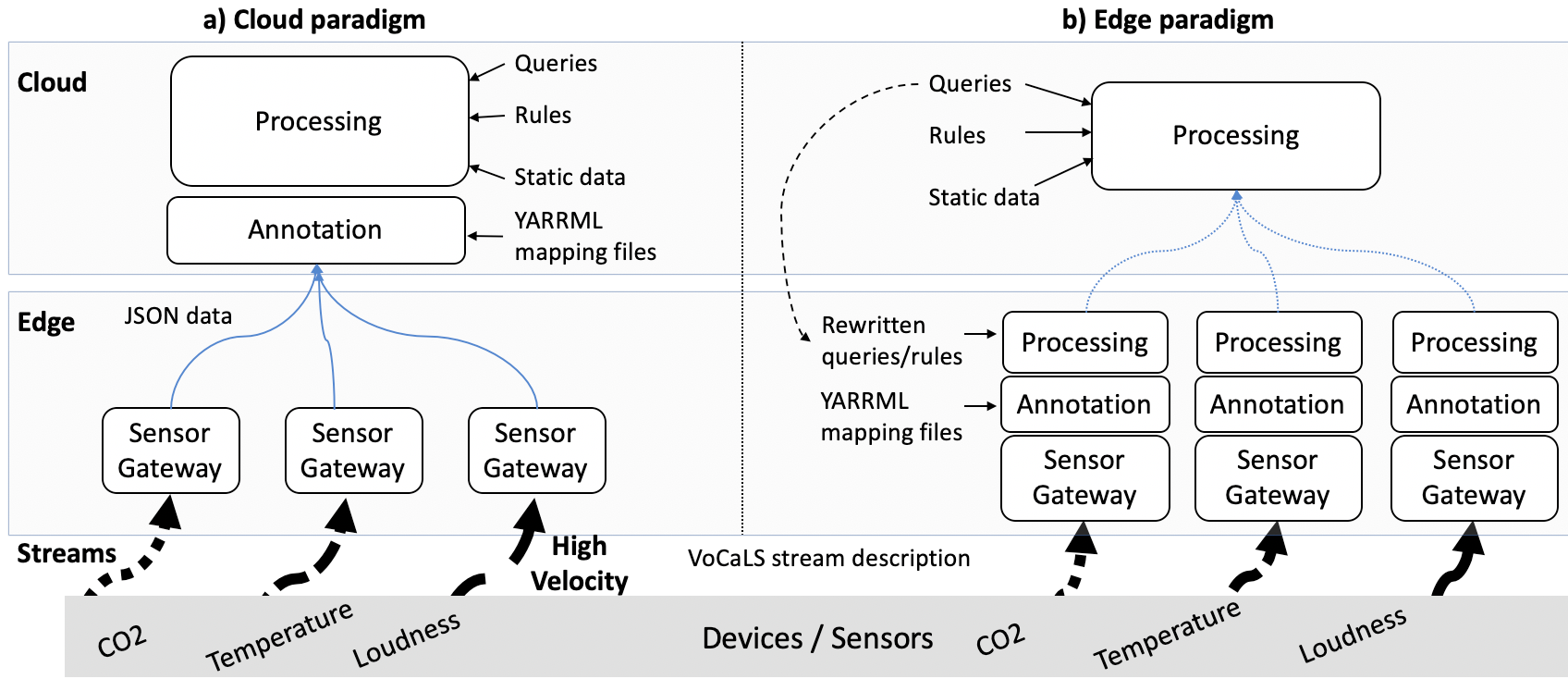Automated distribution of processing on the edge-cloud continuum: a building management use case
Keywords: Semantic Web, Building Management, Cascading reasoning, Cloud, Edge
Promotors: Femke Ongenae, Pieter Bonte
Students: max 1
Problem
Many data-intensive applications, including smart logistics, smart cities, intelligent factories, etc. have been made possible by the Internet of Things (IoT). Due to the large amounts of data produced, it is no longer viable to upload all data to the cloud, as it results in network congestion, low throughput, high latency, and privacy issues. Edge processing provides a solution to these problems and aims to process data as close to the source. However, a generic approach to edge processing that can decide which components to offload is still missing.
The generated data in the IoT imposes data variety, as it results from a range of different sources, each possibly describing their data differently on both structural, syntactical and semantical level. Semantic Web technologies are the preferred technology to solve this data integration problem. Semantic reasoning is often required to interpret the domain knowledge, something very prominent in the IoT. However, there is a mismatch between the complexity of reasoning algorithms and the rate data is produced in the IoT.
Cascading Reasoning (CR) is a vision that aims to realize highly expressive reasoning over high-frequency data by introducing a layered approach. The lowest layers employ low-complexity techniques and select relevant parts of the data. Going up in the layers, the complexity increases while the data volume decreases as each layer selects relevant parts for further processing. CR aligns with Edge processing, as lower layers can be processed closer to the source, i.e. the Edge, and the expressive reasoning allows to handle the data variety and domain knowledge imposed by the IoT. However, until now, CR approaches required to manually define the various layers.

Goal
In this thesis, we aim to explore the design of a generic CR Edge processing platform that can decide which parts of the queries to offload to the Edge and how to optimize the queries and reasoning rules for efficient Edge processing.
This requires research into:
- Techniques to analyze the characteristics of the queries/applications and the data streams to decide the optimal distribution strategy
- Algorithms to split up the required processing/reasoning into different chuncks that can be deployed on edge vs cloud nodes
- Algorithms to automatically distribute the processing components across the edge-cloud continuum
- Monitoring algorithms to monitor the performance of the processing and the network traffic in order to further adjust the processing pipeline
To realize this research, a proof-of-concept for the building management domain can be designed. In this use case, each room of a building is equipped with various sensors, each measuring comfort parameters, such as temperature, humidity, loudness and CO2 values. Each room contains a local sensor gateway that has some processing capabilities. The local gateways are connected to a cloud environment that allows for more resources and processing capabilities. Instead of uploading all the sensor data to the cloud and process it, the building manager want to process as much as possible at the Edge, i.e. on the local sensor gateways, in order to ensure privacy, lower latency, reduce network congestion and decrease the load
on the cloud infrastructure. The local processing entails detecting important events and anomalies in the sensors that are prevalent for optimally controlling and managing the building, e.g. temperature & ventilation adjustments.